Manos Tsagkias
Using Pause Information for More Accurate Entity Recognition
Sep 27, 2021
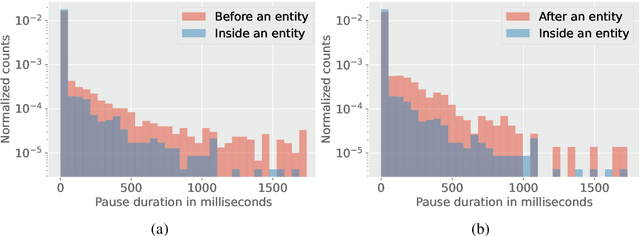

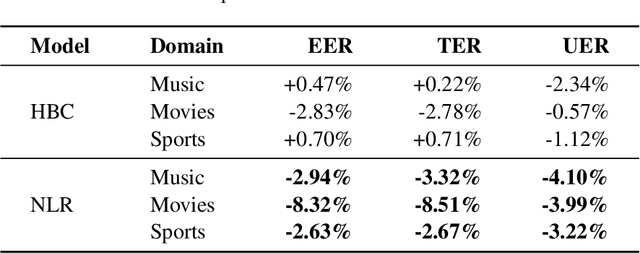
Abstract:Entity tags in human-machine dialog are integral to natural language understanding (NLU) tasks in conversational assistants. However, current systems struggle to accurately parse spoken queries with the typical use of text input alone, and often fail to understand the user intent. Previous work in linguistics has identified a cross-language tendency for longer speech pauses surrounding nouns as compared to verbs. We demonstrate that the linguistic observation on pauses can be used to improve accuracy in machine-learnt language understanding tasks. Analysis of pauses in French and English utterances from a commercial voice assistant shows the statistically significant difference in pause duration around multi-token entity span boundaries compared to within entity spans. Additionally, in contrast to text-based NLU, we apply pause duration to enrich contextual embeddings to improve shallow parsing of entities. Results show that our proposed novel embeddings improve the relative error rate by up to 8% consistently across three domains for French, without any added annotation or alignment costs to the parser.
Error-driven Pruning of Language Models for Virtual Assistants
Feb 14, 2021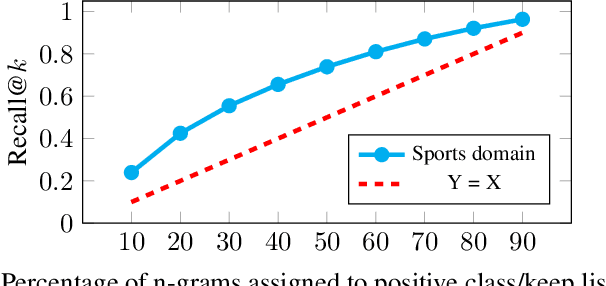

Abstract:Language models (LMs) for virtual assistants (VAs) are typically trained on large amounts of data, resulting in prohibitively large models which require excessive memory and/or cannot be used to serve user requests in real-time. Entropy pruning results in smaller models but with significant degradation of effectiveness in the tail of the user request distribution. We customize entropy pruning by allowing for a keep list of infrequent n-grams that require a more relaxed pruning threshold, and propose three methods to construct the keep list. Each method has its own advantages and disadvantages with respect to LM size, ASR accuracy and cost of constructing the keep list. Our best LM gives 8% average Word Error Rate (WER) reduction on a targeted test set, but is 3 times larger than the baseline. We also propose discriminative methods to reduce the size of the LM while retaining the majority of the WER gains achieved by the largest LM.
Predicting Entity Popularity to Improve Spoken Entity Recognition by Virtual Assistants
May 26, 2020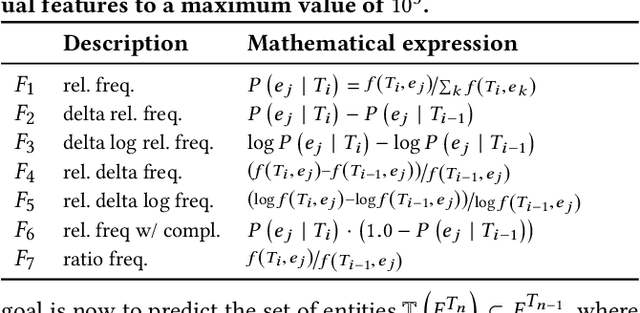
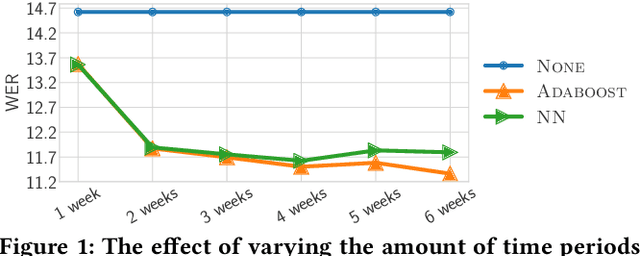
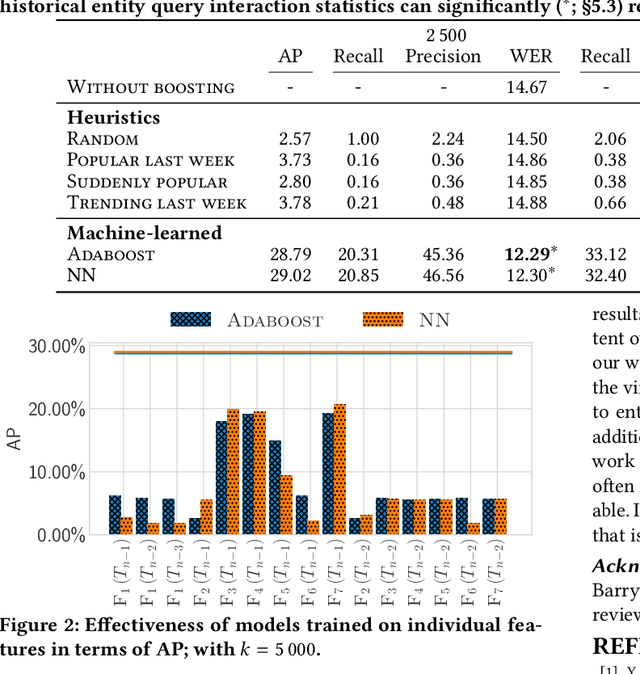
Abstract:We focus on improving the effectiveness of a Virtual Assistant (VA) in recognizing emerging entities in spoken queries. We introduce a method that uses historical user interactions to forecast which entities will gain in popularity and become trending, and it subsequently integrates the predictions within the Automated Speech Recognition (ASR) component of the VA. Experiments show that our proposed approach results in a 20% relative reduction in errors on emerging entity name utterances without degrading the overall recognition quality of the system.
 Add to Chrome
Add to Chrome Add to Firefox
Add to Firefox Add to Edge
Add to Edge